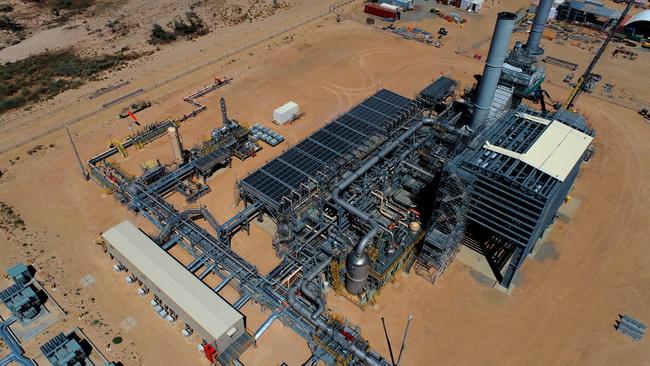Santos to increase shareholder returns in a bid to please frustrated investors
The move will please some investors, which are increasingly frustrated by little growth in the company’s share price – though it will stoke concern about the capacity of the company to invest in growth developments.
Santos will substantially increase returns to shareholders from 2026 as it moves to allay investor frustrations fuelled by a prolonged sluggish share price performance.
The dividend policy change, which will see Santos return at least 60 per cent of free cash flow to investors – up from the previous target of 40 per cent, pushed shares up more than 2 per cent as investors cheered the prospect of higher returns.
Santos has been under mounting pressure to unlock value. Earlier this month, its shares hit a three-year low despite chief executive Kevin Gallagher insisting the business was poised for a new wave of growth as major projects – the Barrosa LNG facility and its Alaskan oil project Pikka – poised to come online.
In an investor day briefing, Mr Gallagher said the projects will be finalised in 2026, which will increase revenues and reduce capital expenditure – which he described as a new phase for the business and allowing higher returns to shareholders.
“We’ve been on a journey for nine years trying to build a company that can provide sustainable cash flows,” Mr Gallagher told investors in Sydney.
The higher shareholder returns will please some investors, particularly retail shareholders – which prioritise franked dividends. But by returning more to investors, the company risks disappointing some investors, which worry about the capacity of the company to invest in longer term projects.
Mr Gallagher said the company would prioritise so-called backfill projects, and whatever funds were left would be allocated to the most attractive project within its development pipeline.
“We are chasing shareholder return growth as opposed to production growth so it is probably a more sustainable growth rate in the future and not chasing everything at once,” he said.
“We are going to reinvest, but maybe not as many simultaneously because we don’t have to.”
Santos has a spate of projects in its development pipeline, including expansion in Papua New Guinea and Alaska,
Barossa will see first gas from its $5.7bn Barossa development in the first quarter of 2025, while the $2.6bn Pikka development will be online in the first half of 2026. Once both are running, Santos said production is expected to be 30 per cent higher in 2027 compared to 2024.
Santos hopes to bolster production to capitalise on increased near-term demand, particularly in Asia. Asia is increasingly concerned about energy security and has limited capacity to install renewable energy sources. As a result, Asian buyers are locking in long-term gas supply contracts with the likes of Santos.
While increased fossil fuel production is a key pillar of Santos’ strategy, the company also set a new strategy of bolstering its carbon capture and storage segment.

Santos said it has now set a target of building and operating a commercial carbon storage business to permanently store 14 million tonnes of carbon dioxide per annum by 2040.
The company is hoping to profit from increased demand from gas producers to store carbon dioxide as they struggle to reconcile meeting strong global demand for gas with commitments to reduce emissions.
Increased carbon capture and storage is, however, controversial. Environmentalists oppose increased gas production and have sought to undercut the viability of carbon capture and storage technology.
Santos has rejected the suggestion carbon capture and storage does not work, a case strengthened by the recent commencement of its Moomba facility.
Santos and its partner, Beach Energy – in October began injecting captured carbon dioxide into depleted reservoirs at the Cooper Basin at a rate that has them on course to meet their targeted 1.7 million tonnes per annum, a development that undercut beat down criticism of the technology.
By injecting the captured CO2, the joint partners will be able to abate all of the gas from the Moomba Gas Plant that would have otherwise been released. By storing it underground, Beach and Santos will earn carbon credits, which both can then use to meet their own emission reduction targets or sell into the open market. Whichever option, the commencement of Moomba will be lucrative for both companies.
Santos shares closed up 0.6 per cent at $6.86, against a rise of 0.9 per cent in the broader S&P/ASX200 index.




To join the conversation, please log in. Don't have an account? Register
Join the conversation, you are commenting as Logout